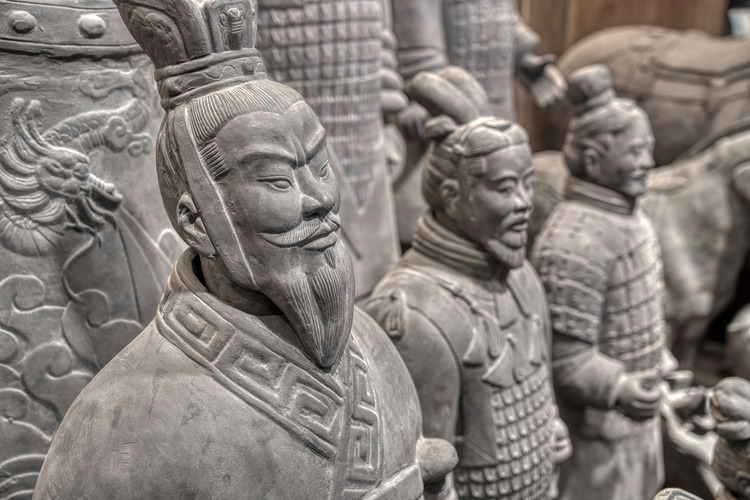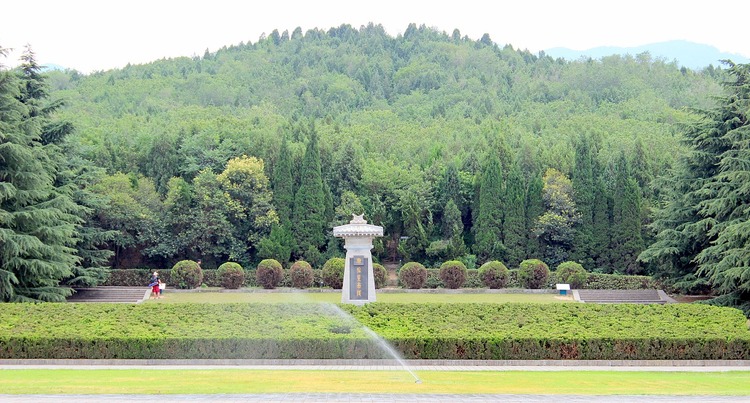
The tomb of first Emperor Qin Shi Huang is suspected to be filled with booby traps
Words by Stuart Butler
It’s like the storyline of an Indiana Jones film. An army frozen in stone, protecting an unopened ancient tomb rumoured to be filled with priceless treasures that are protected by deadly booby traps. What separates this from a Hollywood script line, though is that it might actually be true.
Founder of China’s Qin dynasty, Emperor Qin Shi Huang, who reigned between 221BCE and 210BCE, was the first Emperor of a unified China. It was he who created the Great Wall of China as well as laying down a vast national road system. But, perhaps most famously, it was Qin Shi Huang who built a huge stone army, known as the Terracotta Army, which consists of some 8,000 life-size statues of soldiers, as well as numerous horses and chariots. Surrounding the mausoleum of Qin Shi Huang, the terracotta Army was likely built in order to protect the Emperor in the afterlife. Although his legacy has bestowed architectural wonders on China, the Emperor himself has traditionally been portrayed as something of a tyrannical monster (although recent historical re-readings are beginning to question this image) who, in order to live forever, drank wine laced in mercury, which probably accounts for his rather short life span!
At the centre of Qin Shi Huang’s mausoleum is the huge tomb in which he was buried in 210BCE. No contemporary reports are known to exist that describe the contents of the tomb, but we do have the words of Sima Qian, a historian who lived around a hundred years after Qin Shi Huang. His description of the emperor’s mausoleum reads; “Palaces and scenic towers for a hundred officials were constructed, and the tomb was filled with rare artefacts and wonderful treasure. Craftsmen were ordered to make crossbows and arrows primed to shoot at anyone who enters the tomb. Mercury was used to simulate the hundred rivers, the Yangtze and Yellow River, and the great sea, and set to flow mechanically. Above were representation of the heavenly constellations, below, the features of the land. Candles were made from fat of “man-fish”, which is calculated to burn and not extinguish for a long time.’

And it’s this mention of crossbows and rivers of mercury (and the ‘man-fish sound pretty scary as well) that might perhaps have kept the interior of the mausoleum safe from harm and apparently unopened since the day it was sealed more than two thousand years ago. Today, the reason the tomb hasn’t been opened yet is because of fears that opening it may cause irreparable damage to the structure, but so strong is the belief in these booby traps that even today Chinese archaeologists are nervous about what they might have to navigate past in order to reach the rumoured treasure. Although you may scoff at the idea of a bobby trapped tomb the interesting thing is that when scientists measured mercury levels around the area of the mausoleum they were much higher than to be expected. Some theorise that this is mere industrial run off but others wonder whether an Emperor who drank mercury, thinking it would give him immortality really did have rivers of mercury built around his tomb. And if that part has any kernel of truth to it, then what about the crossbows poised to fire the moment someone passes them? Well, if they were made of wood then they will almost certainly have rotted away by now and pose no threat, but if they were constructed from certain metals then there’s a chance they might still prove deadly.
There have been some proposals to use new, non-invasive techniques to peer into the tomb (such as types of advanced X-ray) but these are yet to happen and so, for now, unless a budding Indiana Jones can find a way in, then Qin Shi Huang will continue to guard his secrets a little longer.




